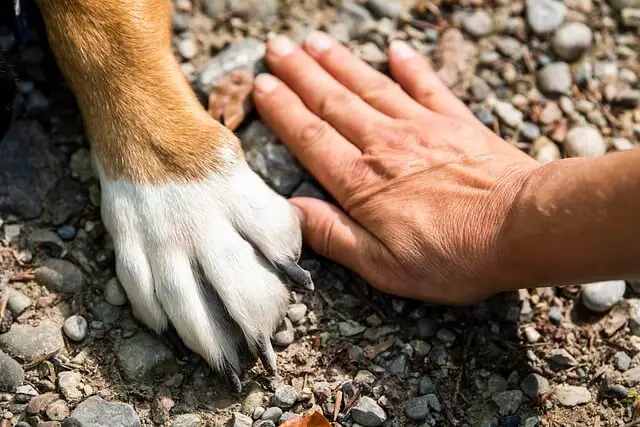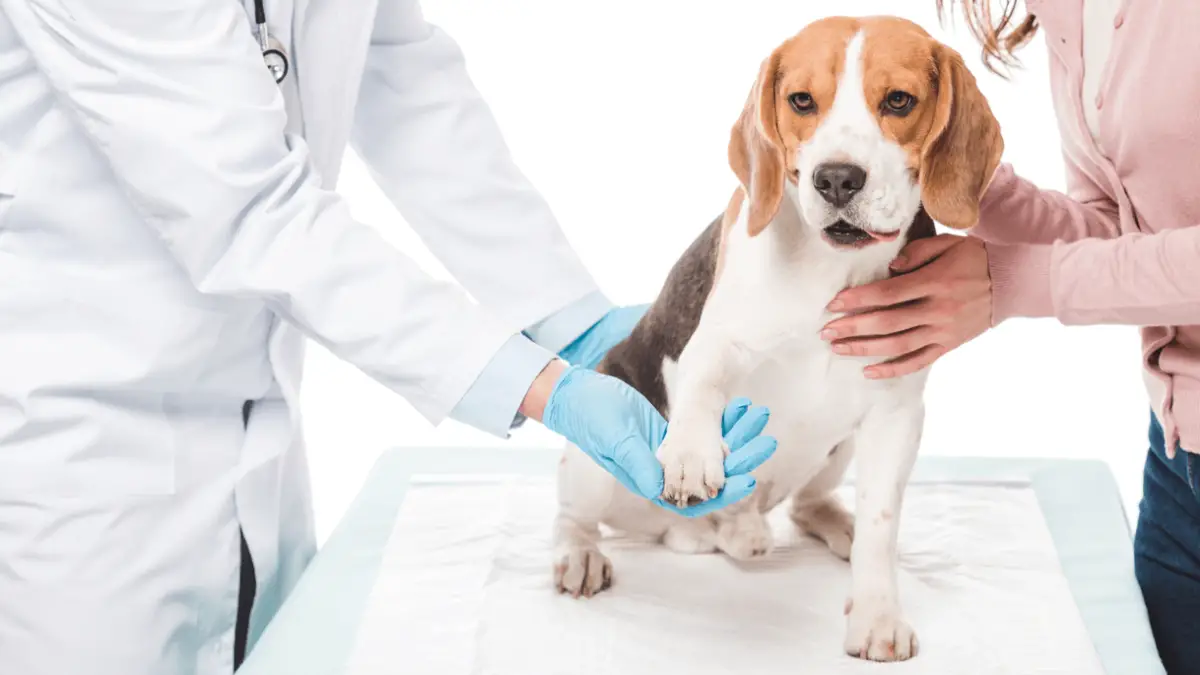What To Do If Your Dog Has A Swollen Paw?
14.12.2022.
Dog paws are often overlooked part of their bodies, and most of us don't provide proper care for them. There could be situations where you will notice that one or more of your dog's paws are swollen. There can be a few reasons why this could happen, and you will have to find an underlying health issue causing this problem.
Swollen paws in dogs, or pododermatitis as it is usually called in medical terms, is a common health problem related to dogs' paws and pads. This state can be very painful and unpleasant for the dog, so it is important to treat it immediately.
Depending on the severity of the underlying problem, your dog could exhibit mild or severe symptoms, and the best thing you can do is to notice them all and contact your vet asking for help.
Causes of swollen paws in dogs
Swollen paws indicate that some underlying problem is bothering your dog, and you will have to find the main cause. Only that way will you be able to provide your dog with proper care to remove swollen paws from his life.
The most common reasons for swollen paws in dogs include the following:
1. Infections
The most common reasons for swollen paws in dogs are different infections. This infection could be fungal or bacterial, and to remove swollen paws, your vet must set the right treatment for your dog.
Infections can also happen if some foreign object gets stuck in your dog's paws, such as a nail, splinter, or even a foxtail, and in most cases, this will lead to infection and swollen paws.

RELATED: Do Dogs Have Dominant Paws
2. Injuries
Different injuries or even fractures will also cause swollen paws in dogs. The first thing your vet will examine when you come to the clinic is to see if your dog's paw is broken or injured. Their paws are extra sensitive, and we often see fractures in their feet.
3. Allergies
Different types of allergies can affect our dogs, and swollen paws can result from any environmental, contact, or even food allergies. To treat this, you will have to find what is causing the allergy in your dog and remove it from your dog's life.

RELATED: Dog Licking Paws - What Does it Mean
4. Tumors
Many reports have seen patients with certain tumors have experienced swollen paws. If this is the case with your dog, you will have to talk to your vet and find the best treatment option for this tumor since this is a serious problem that should be addressed immediately.
5. Arthritis
If you notice swollen paws on different legs, and you can't figure out what is causing this problem, arthritis could be the main reason. Arthritis could be pretty easy to notice since there will be far more symptoms of this problem, and it is important to emphasize that enlargement and swelling will also happen at the joints.
RELATED: 7 Possible Reasons Why Do Dogs Put Their Paw On You
Symptoms of swollen paws in dogs?
Any dog can develop this health issue, and depending on the main reasons mentioned above; your dog will show some symptoms.
Most usually, dogs will feel pain in their paws and be tender to the touch. Some dogs could even refuse to walk because of the pain.
General symptoms of swollen paws in dogs include
- Redness
- The odor from the paws
- Bleeding from the paws
- Biting paws
- Refusal of walking
- Foot licking
- Lumps on feet
Noticing any of these symptoms will indicate that your dog must receive proper medical attention if you want to remove swollen paws. These symptoms and swollen paws will not go by themselves, and depending on the issue that is bothering your dog, he will have to receive proper treatment.

RELATED: 7 Ways to Clean and Care for Your Dog’s Paws
How to diagnose swollen paws in dogs?
After you bring your dog to the vet, he will first do a physical exam of your dog. This will be enough for many cases of swollen paws to determine the main cause of this problem.
If your vet cannot recognize the real reason behind swollen paws, he will take a skin sample from the dog paw and look it under the microscope. By doing that, he will be able to notice if there are any fungal or bacterial infection that is bothering your dog.
Some vets could also request urinalysis and blood tests to understand what problem lies behind swollen paws.
Treatment
As with anything, the treatment will depend on the main underlying problem that is bothering your dog. Your vet will set the right and proper treatment for your dog after he understands what is bothering him.
Depending on your dog, he may receive medications such as antibiotics and anti-inflammatories to fight health issues. If your dog is in a lot of pain, he might receive pain meds to ease his pain.
You must follow your vet's instructions and always try to set the treatment with your dog. Owners often like to medicate their dogs without consulting with their vet, and this is where additional problems can arise.

RELATED: Why Do Dogs Chew Their Feet? 4 Possible Reasons
Recovery
Treating swollen paws in dogs will require time, and recovery time will greatly depend on the underlying issue that you are trying to resolve. For some dogs, full recovery can take up to a few days, while for others, it can last up to a few weeks and even months.
The best thing you can do to ensure that your dog will recover the fastest possible is to listen to your vet and provide your dog with proper treatment. Only that way can you be sure that he will heal from the swollen paws.
World Dog Finder team







Share